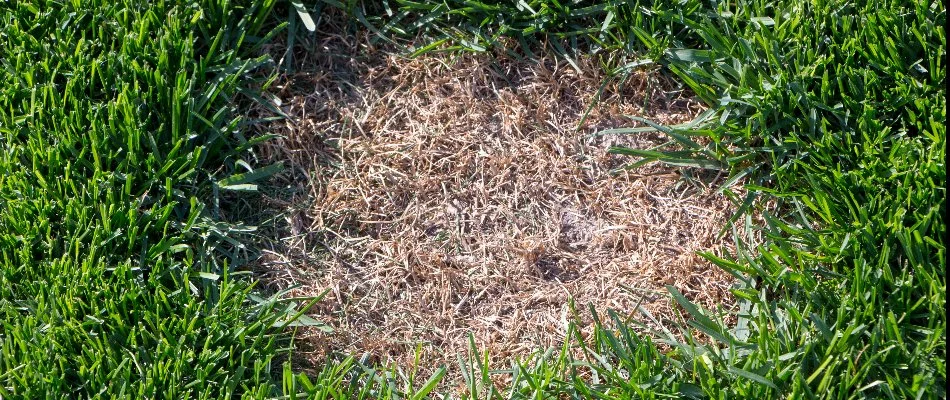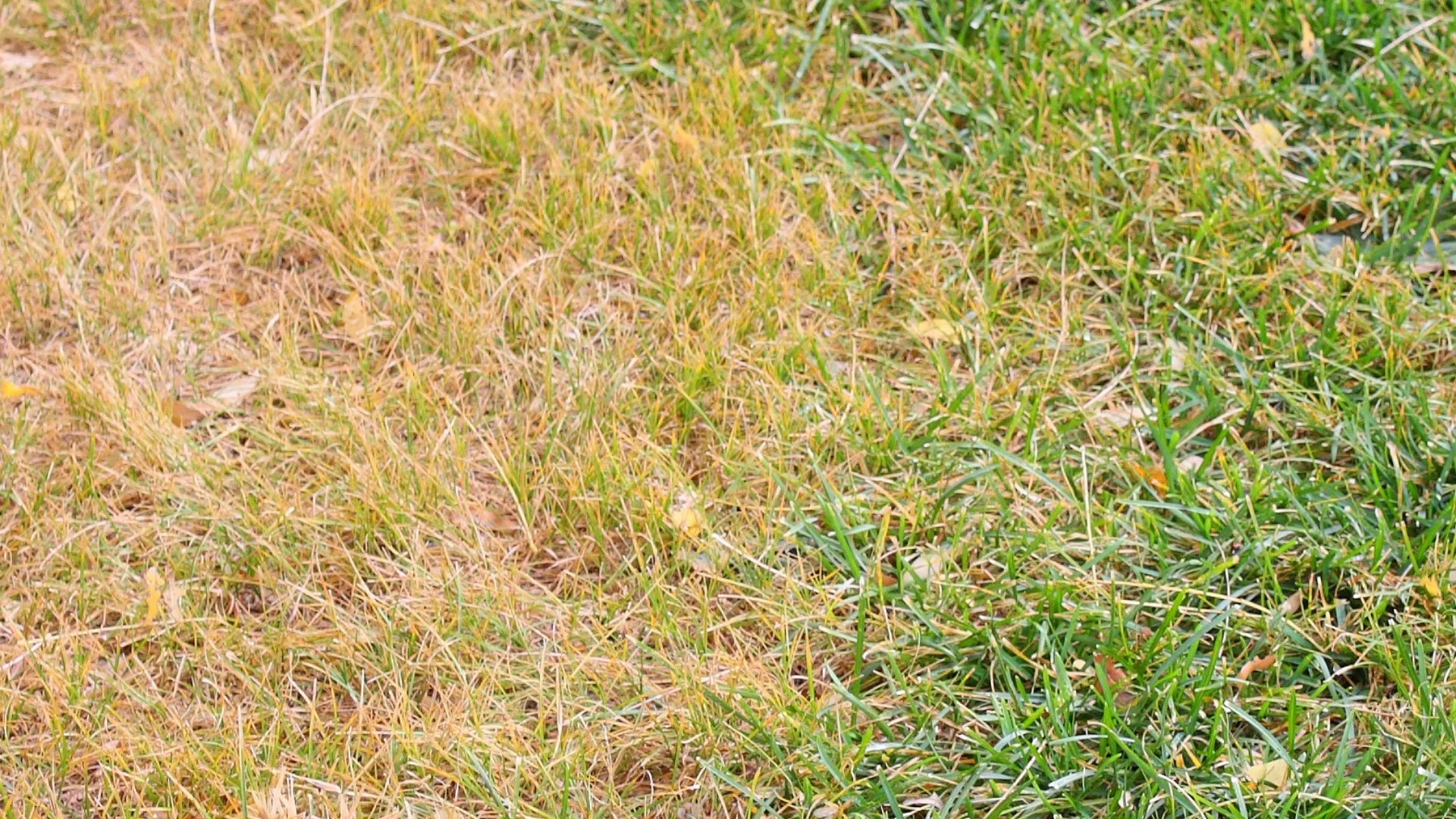There are various types of fungi that can infect your lawn in Texas, but the type of grass you have, weather conditions, and poor cultural practices may make it more susceptible. Brown patch is a common lawn disease that can affect many types of grasses, and it thrives in hot, humid weather. Gray leaf spot is often found on St. Augustine lawns and develops when temperatures are warm and there's prolonged wetness. Dollar spot usually develops in late spring or early summer when heavy dews form on the grass at night. Take-all root rot is most common in April and May when soil temperatures are between 77 and 86 degrees Fahrenheit. When under the right conditions, lawns can suffer from these various diseases, each with its unique causes!
Brown patch, also known as large patch, thrives in hot, humid weather.
Brown patch, also known as large patch, is a fungal disease caused by pathogens present in the soil. The fungus can spread quickly throughout your entire lawn under the right weather conditions. Unfortunately, all types of grass are susceptible to this disease, and it's most commonly observed in the fall, although it can sometimes occur in the spring. Brown patch thrives in hot and humid weather, which can result in prolonged wetness on the grass.
Gray leaf spot infects lawns that remain wet for long periods.

Prolonged periods of wetness on your lawn increase its chances of a gray leaf spot infection! Gray leaf spot is a type of fungus that can infect your lawn when the weather is hot and humid, and the grass remains wet for 14 hours or longer. This disease is more common on St. Augustine lawns and usually appears between June and August. If you water your lawn daily or every other day, it can create the right conditions for gray leaf spot to develop, especially in areas that receive little sunlight. Anything that keeps your lawn moist, such as extended periods of rainfall or improper irrigation, can also increase the chances of this disease spreading.
Dollar spot grows after heavy dews form on grass between late spring and late summer.

If you notice heavy dews forming on your lawn from late spring to the end of summer, you should be on the lookout for dollar spot! Dollar spot is a fungus that typically grows in hot and humid weather after heavy dews have formed when temperatures at night exceed 50 degrees Fahrenheit and there are 10 to 12 hours of consistent moisture. It is most commonly found on bermudagrass and zoysia lawns. Additionally, soil compaction, poor airflow through your turf, and excessive thatch create ideal conditions for this lawn disease.
Take-all root rot infects stressed lawns during the spring.
A lawn that's stressed during the spring is more susceptible to take-all root rot! Take-all root rot is a type of fungus that can significantly impact your lawn, especially when it experiences high levels of stress. The fungus thrives in soil that has a temperature of between 77 and 86 degrees Fahrenheit and is most commonly found in April and May. Moreover, its development is often influenced by poor drainage, excessive thatch, and over-irrigation.
Reach out to us today to schedule any of our lawn disease control services.
At CitiTurf, we offer lawn disease control services to treat brown patch, gray leaf spot, dollar spot, and take-all root rot! We will treat your lawn with a one-time curative treatment to eliminate the disease from your lawn. If the disease becomes present again in the same season, we'll even spot treat for free! We offer these services to residential properties in Plano, Allen, Frisco, McKinney, Murphy, TX, as well as other surrounding areas. Reach out to us today at 972-516-0001 to sign up!







